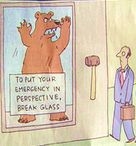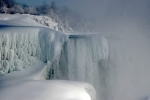Sir NoddinOff wrote:That's almost textbook CSR.
Without zooming in much more closely on that cluster centered around 3:00, it's impossible to tell if this is true CSR or a bunch of centrals NOT related to CSR or even just sleep/wake junk.
startanew, any chance one of your major wakes/restless periods was around 3:00??
Something's wrong here. I suspect your mouth partially dropped open, however your leaks aren't terrible, hence partially open.
There may be a bit of mouth breathing between 0:00 and 1:00, but it's not enough to worry about because the leaks are still pretty low. The leaks during the nasty cluster of centrals, however, is excellent for a PR machine at pressures of 5-7 cm H2O with a nasal pilllows mask like the Opuse 360: The expected leak for that mask at pressures of 5-7 cm is in the neighborhood of 20-30 L/min (as I recall) and the total leak graph stays below 24 L/min for almost the entire cluster of CAs and it's always below 30 L/min during that nasty cluster. In other words, during the cluster of CAs, there is NO unintentional leaking of any significance going on.
For some reason your APAP machine barely responded to this event cluster tho your pressure range is set to 5-20cmH20. Talk to your sleep doctor and, BTW, I'd not throw away that chinstrap just yet.
The APAP did NOT increase pressure during the cluster of centrals because
centrals are NOT fixed by increasing the pressure since the airway is already open AND in some people, additional pressure can actually increase the number of centrals.
The two 1 cm increases in pressure shortly before 2:30 are in response to a cluster of OAs and Hs. On the PR machine, the machine will respond to a cluster of OAs and Hs by increasing the pressure by 1 cm and then waiting for at least minute or two to see the obstructive events stop. In this case, it appears that after the first 1 cm increase in pressure, there was a 5 minute (or more) gap before additional obstructive events happened. After the second 1 cm increase in pressure, there are no more obstructive events (and hence no additional pressure increases) until after the end of the nasty cluster of CAs.
The slow decrease in pressure during the central apneas is probably due to the search algorithm on the PR kicking in: The machine is testing whether or not there is an increase in
flow limitations caused by a
partially obstructed airway. The centrals are not caused by flow limitations; they're caused by the brain forgetting to send the signal to breath to the lungs and diaphragm.



















